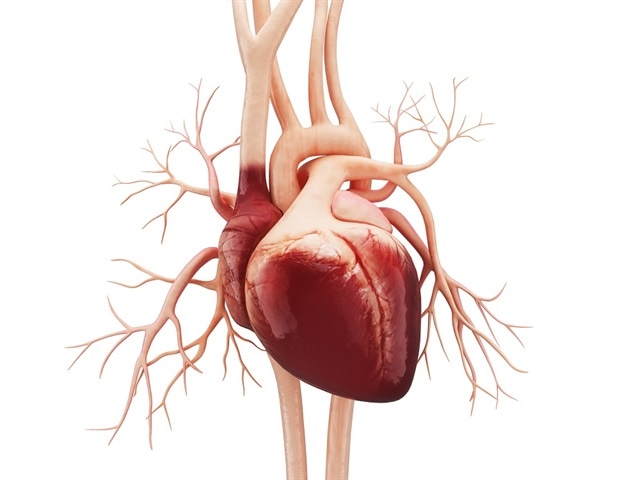
[ad_1]

Utilizing laboratory engineered tissue, scientists on the College of Colorado Anschutz Medical Campus have created a full thickness, biodegradable patch that holds the promise of correcting congenital coronary heart defects in infants, limiting invasive surgical procedures and outlasting present patches.
The findings have been printed this week within the journal Supplies At the moment.
The final word objective is to make lab-grown coronary heart tissue from a affected person’s personal cells that can be utilized to restructure the guts to appropriate for coronary heart defects.”
Jeffrey Jacot, PhD, research’s senior writer, affiliate professor of bioengineering, College of Colorado College of Drugs
About 10,000 infants are born with a posh congenital coronary heart defect yearly on this nation, requiring surgical procedure within the first yr of life. A few of these operations require the implantation of a full-thickness coronary heart patch. However the present supplies used within the patch are non-living and non-degradable. They do not develop with the affected person and sometimes fail as a result of they do not combine with the guts.
Jacot mentioned these surgical procedures are largely palliative, extending survival solely till the subsequent surgical procedure.
However his lab’s patch, referred to as a tissue engineered myocardial patch, may survive the mechanical forces of the guts wall and combine into the guts itself. Ideally, it will final for so long as the affected person lives.
“The present patch supplies accessible to pediatric coronary heart surgeons are completely non-living and non-degradable, which frequently fail of their long-term therapeutic efficacy because of low compliance, an elevated danger of thrombosis and intimal hyperplasia, and their incapability to transform and combine with the guts,” the research mentioned.
Everlasting fixes require biomaterials which might be degradable however which additionally promote coronary heart regeneration in order that the patches are finally changed by wholesome myocardium, the center muscular layer of the guts and the thickest.
“Any patches that aren’t changed by wholesome tissue previous to their degradation will inevitably fail and result in long-term problems,” Jacot mentioned.
The patch was created within the lab utilizing a way generally known as electrospinning, the place electrical energy is utilized to liquid options to create nanofibers used to make a `scaffold.’ The scaffold is then injected with residing cells. This finally turns into the patch.
“The scaffold was discovered to be mechanically ample for coronary heart wall restore,” Jacot mentioned. “Vascular cells have been in a position to infiltrate greater than midway by the scaffold in static tradition inside three weeks.”
The patch requires extra checks earlier than it may be utilized in people.
Jacot is optimistic that it’s going to play a crucial function sooner or later therapy of congenital coronary heart defects and different cardiac circumstances.
“That is the primary profitable demonstration of a really thick, porous electrospun patch particularly for cardiac tissue engineering,” he mentioned.
Supply:
Journal reference:
Jarrell, D. Okay., & Jacot, J. G. (2023). An in vitro characterization of a PCL-fibrin scaffold for myocardial restore. Supplies At the moment Communications. doi.org/10.1016/j.mtcomm.2023.107596.
[ad_2]